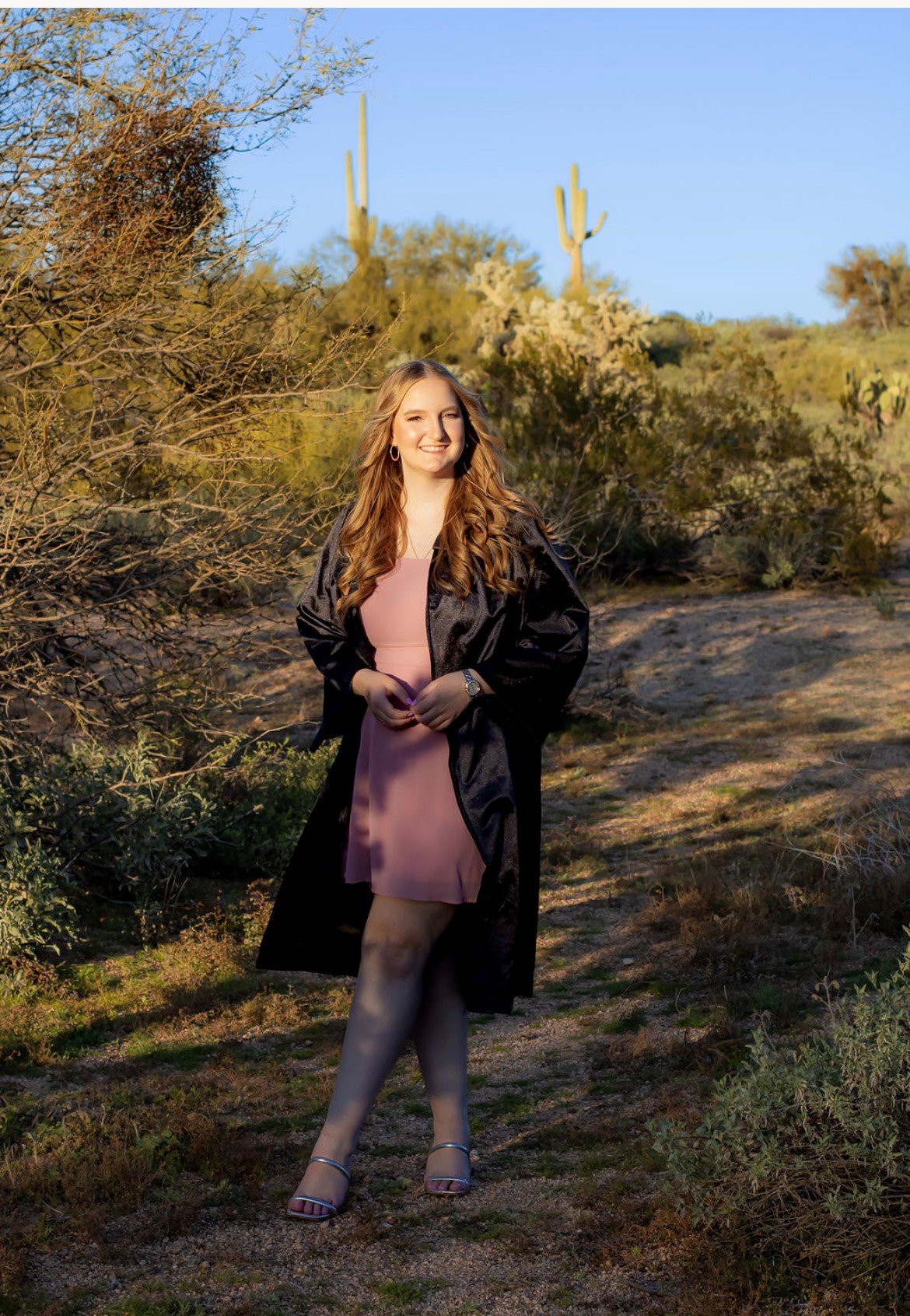Dual Enrollment in Arizona: Students share their experience
Arizona high school students who participate in dual enrollment are more than twice as likely to attend college, according to our research in conjunction with ASU Helios Decision Center for Educational Excellence. They’re also more likely to stay enrolled, earn higher GPAs and finish. And there are multiple reasons for that.
Dual enrollment prepares students and gives them confidence that they’ll be ready for the rigorous coursework in college. It also reduces the eventual college tuition cost because students can earn college credits even before they graduate high school.
Hear directly from students about the impact dual enrollment has had on their lives. Their personal stories exemplify why Helios Education Foundation is working to make these courses accessible to more students across Arizona.

Lizbeth Espinoza
Lizbeth Espinoza completed 60 college credits through the dual enrollment courses she took while attending Xavier College Preparatory in Phoenix on scholarships. That was enough to earn her an associate degree by the time she graduated high school in May 2021.
The daughter of Mexican immigrants is now a junior at Arizona State University and the first in her family to go to college.
Because of all the college credits she completed through dual enrollment, she will graduate a year early from ASU in May 2024 – and she will do so with two majors and two certificates.
“Dual enrollment really encourages you to go for a postsecondary education, and you have all these credits you can transfer,” Espinoza said. “You also get to focus on your major once you get to college – and you save money.”
Coming from a low-income background, cost would’ve been a barrier for Espinoza had it not been for the financial aid she received. It covered much of the cost for her dual enrollment courses, most of which she took on her high school campus and a few online through Rio Salado College.

Eleanor Robertson
Eleanor Robertson grew up in Ajo, a rural town in southwestern Arizona. She knew getting accepted to a selective college would require her to stand out. But that was difficult to do given her high school didn’t offer rigorous courses.
With the help from her high school counselor, she was connected to the Arizona Student Opportunity Collaborative, which made it possible for her to start taking dual enrollment courses online. By the time she graduated Ajo High School, she had taken five dual enrollment courses.
“Dual enrollment was the only way for me to present myself as a student that was trying to be challenged, instead of just looking like I was doing all the easy courses when, in reality, that was all I could do at my school,” she said.
Robertson believes that helped her get accepted to the University of California, Berkeley, where she’s now a freshman. Plus, she feels it helped her prepare for the rigorous college coursework she’s now taking.
“Being in college and seeing the skill level that I’m expected to work at, I can’t imagine where I would be if I hadn’t taken those courses,” she said. “It would be very difficult.”
She added participating in dual enrollment was a huge confidence booster for her and other students from her rural community.
“It got us thinking about college,” she said. “Some of my friends weren’t sure if they wanted to go to college. They weren’t sure if they were smart enough or had enough education to make it in college.”

Rodrigo Guizar
Rodrigo Guizar knew from an early age growing up in Yuma that he wanted to go to college.
“Education I believe is the way that you change your whole life and the lives of people around you,” he said. “I’ve seen it firsthand how difficult it is to go through life without a formal education as my parents have.”
Neither of his parents went to college. His father, who’s a carpenter, graduated high school while his mother only completed elementary school because that’s all that was offered in her small Mexican village.
Still, his parents stressed the importance of education.
Guizar is now headed to Columbia University, where his sister also attends. He feels his parents’ encouragement and advice from his counselor to take dual enrollment courses in high school helped him get there. He took five dual enrollment courses.
“Taking these college classes helped me learn that in college you have to learn quickly, and you have deadlines to meet,” he said. “Every week, you have an exam or a couple quizzes. It’s not like high school where you have a whole year to learn a subject.”
He also feels taking dual enrollment courses helps students stand out as they’re applying for college.
“It shows how you’re pushing yourself and that you want to be a better student,” he said. “So dual enrollment is much more than just a college course. It really helps you set your path, and it helps you stand out.”

Lara Simpson
Lara Simpson took multiple dual enrollment courses during high school to get a head start on college. As a result, she will have 43 college credits when she graduates from Gila Ridge High School in Yuma at the end of May.
She will transfer her credits to the University of Arizona where, starting in the fall, she will pursue a bachelor’s degree in molecular and cellular biology.
“I want to go into medical school, and having a lot of my prerequisites done is going to benefit me to finish my bachelor’s degree early and then go into medical school earlier,” she said.
Calculus, statistics, trigonometry, English 101, psychology and philosophy are among the dual enrollment courses she took at Arizona Western College, which is about a five-minute walk from her high school.
Simpson believes the courses put her academically ahead of her peers, and she got to experience different types of teaching styles from professors.
Plus, she feels the courses taught her a lot about time management.
“I’m not sitting in a classroom for an hour a day like in high school – I’m sitting in a classroom for an hour a week and then having to do all the work outside,” she said. “It really benefited me, and I feel a lot more prepared for college.”

Ian Yost
Like most students attending a school in rural Arizona, Ian Yost doesn’t have a lot of rigorous courses to choose from. He said Grand Canyon School where he attends has limited resources, and only offers a handful of advanced placement classes.
But with the help from the Arizona Student Opportunity Collaborative, he was able to take several dual enrollment courses online. He will graduate in May with 12 college credits.
“The college credit was definitely one of the reasons I chose to do it,” Yost said.
Another reason was to fill his schedule with classes he felt would be more challenging than what his school offers.
He feels the college-level coursework he took through dual enrollment prepared him for what’s to come once he starts attending the University of Arizona in the fall. He’s planning to study biomedical engineering.
“How I look at dual enrollment is now I’m caught up with all the kids from larger schools in Phoenix,” he said. “I feel like I’m now in the top 25% of the graduating class. Without these classes, I would be in the lower ranks.”

